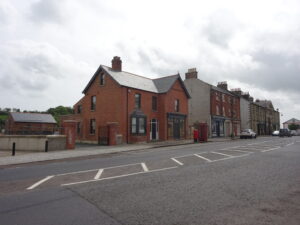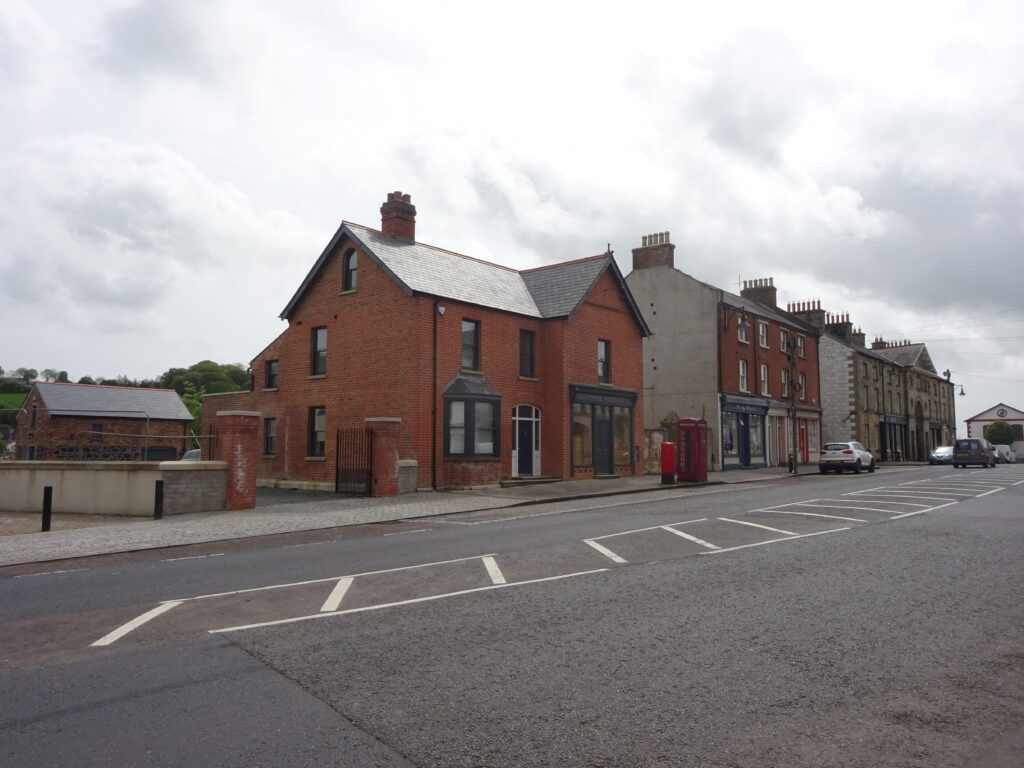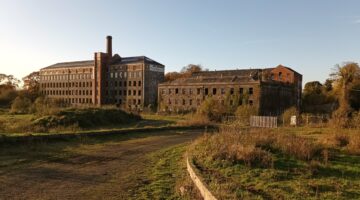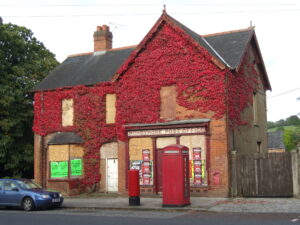
For many villages, towns and cities, the Post Office was a focal point for business and activity. There are currently eight buildings that have been used as a Post Office on the Heritage at Risk Database. There has been substantial work to two former post offices in the last number of years including Gracehill and Ederney as a result of funding through the Village Catalyst programme. Clearly these are still buildings of potential. The remarkable transformation of the sad sight that the old Post Office had become in Moneymore can hopefully inspire owners to take on challenging projects and make a difference in rural locations.
The Post Office in Moneymore lies almost central in the village surrounded by buildings built by the Drapers Company of London. Though not as grand as the ashlar limestone William Joseph Booth designed buildings in Moneymore, the Post Office adds to the architectural evolution of the village. The building was constructed in 1906 and served both as an important business and social spot but also as a house to the Harris family who originally lived and worked there. It is two-and-a-half-storeys tall with a projecting gable bay built in brick in Flemish bond. There are two entrances to the front, on the left is the entrance to the house whereas the right leads into the post office. Inside the post office was a wooden counter, telephone booth and various shelving units. Sadly these had deteriorated to such an extent that they could not be reused.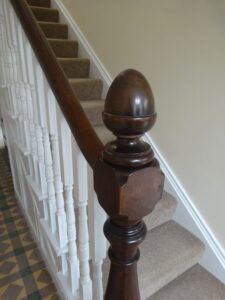
The private house entrance has a canted bay window facing the main street. The entrance is round headed with leaded sidelights with fanlight over, divided in three. The Post Office entrance has a traditional shop front with carved pilaster and console brackets. Beneath the windows are airbricks and a stringcourse in decorative brickwork three-quarters up the gable.
The building was occupied by the Harris family. Robert William Harris also brought electricity to Moneymore in 1927 and expanded the system in 1929. A Blackstone oil engine and General Electric dynamo and switchboard were located to the side of the post office. Train tickets were also sold in the Post Office. The building ceased being a Post Office in 2005 when it moved to a different premise in the village. It then was boarded up and lay vacant until 2019.
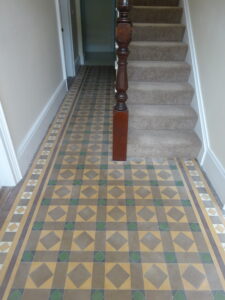
The owner bought the premises in 2014 and began restoring the building in 2019. The owner drafted in Ian Lenaghan as architect and Chris McCollum for work to the interior and exterior. Additionally, the owner sourced a local carpenter who has been able to replicate the woodwork to the front of the building. This involved replacing the brackets with elm that had blown over on the Lissan Estate over 10 years ago. A template was made from the original design and cut into shape. Wood was cut into lengths utilising various lathes and bandsaws under his expert eye. Mid Ulster Council provided money towards the shop front of the building through its “Town And Village Business Spruce Up Scheme”.
The condition of the building had suffered quite significant damage to the inside as a result of water ingress and irregular maintenance. Although from the outside it seemed in fair order, slipped slates, ineffective guttering and vegetation encroachment all played a part in turning a moderately difficult job into an extremely challenging one. Inside numerous ceilings had caved in with warped wooden floorboards and dry rot throughout. What could have been preserved and kept was, such as the late Victorian fireplaces with tiled surrounds, Edwardian geometric floor tiles (preserved by carpet) and staircase. Sadly, the old post office counter and telephone booth could not be fully preserved due to the heavy dry rot it sustained. Cornicing was retained and reinstated to some of the rooms and the brickwork was repointed with hydraulic lime to the exterior. The shop front although from the outside seemed fine, was rotten throughout and had to be rebuilt. Wood was sourced from nearby Lissan Demesne and used to carefully replicate the existent sign.
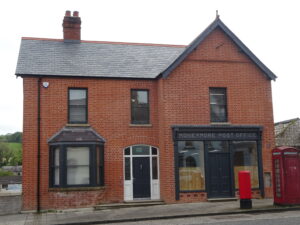
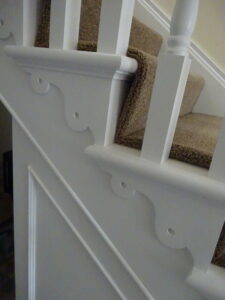
Robert Colvin of Moneymore Heritage Trust recalls the social importance of the building, “Captain Harris ran the Post Office for many years and he opened the doors punctually every day of business at exactly 9.00am. The interior was plain wood and a large wooden shelf provide in the rear left corner where a last-minute postcard could be written, or a form signed; and a ballpoint pen attached by a piece of string for convenience. The security was a mesh grill on the right with an arched opening to do transactions through. There were two shallow shop window features on each side of the entrance door. The one to the left was used for advertising the local Boys Brigade Display and other public information. The one on the right-hand side encouraged people into the habit of saving using the Post Office savings book and with the branding used at the time. These features changed very little well into the 1980’s.”
The building is now entering a new phase in its history, now housing eleven staff members, providing opportunities within a rural community and giving the village a much-needed boost. Although a significant challenge the owner must be commended in completing the job especially given the Covid pandemic and knock-on impacts on labour and trade.
Summing up Mr Colvin adds that “The new owner must be congratulated for the manner in which he has spared no expense to re-invigorate the lovely old building, replicating the characteristic features so precisely, and still enable modern accommodation to be housed without any compromise on the unique architectural integrity of the former building. The renovated Post Office adds greatly to the impact of the streetscape and maintains and preserves for present and future generations the unique character of this particular building, and the village as a whole.”
It is positive to see the transformation of this building into a useful space providing employment in the local area. Efforts were made to preserve as much detailing as possible throughout the scheme which has resulted in improving the Conservation Area of Moneymore. Incidentally at the same time a neighbouring building has now been reused and other buildings along the main street are now coming into full use. It seems therefore that the potential of Moneymore and its Conservation Area is being realised.
Ref – RSUA Perspective July 2022
